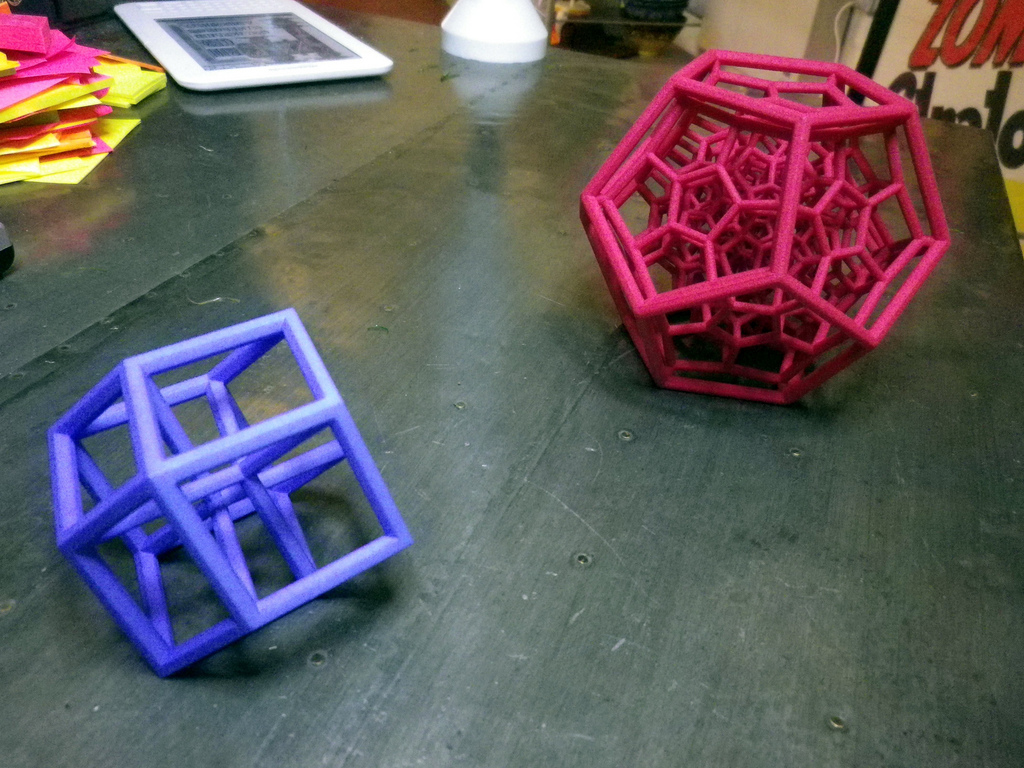
While it is possible to visualize space-time by examining snapshots of the flower with time as a constant, it is also useful to understand how space and time interrelate geometrically.Įxplore more in the 4th dimension with Hypernom or Dr.

Your 4D space is just a set of 4-uplets (x,y,z,t), and you can still project points (x0,y0,z0,t0) in your surface onto 'hyperplanes', such as the set defined by the equation t00. Equating time with the 4th dimension is one example, but the 4th dimension can also be positional like the first 3. For an object living in a 4D space, visualizing is harder, but writing down equations is not. including the static objects, kinematic objects and dynamic systems as well.

#4d objects visualization software#
Yet, we can observe the transformation, which is proof that an additional dimension exists. The 4DV-MONITOR software has been designed to visualize data produced during. The flower’s position it not changing: it is not moving up or sideways. Mathematically, however, there is no reason to limit our understanding of higher-dimensional geometry and space to only 3, since there is nothing special about the number 3 that makes it the only possible number of dimensions space can have.įrom a physics perspective, Einstein’s theory of Special Relativity suggests a connection between space and time, so the space-time continuum consists of 3 spatial dimensions and 1 temporal dimension. Just as the edges of the top object in the figure can be connected together by folding the squares through the 3rd dimension to form a cube, the edges of the bottom object can be connected through the 4th dimension Why are we trying to understand things in 4 dimensions?Īs far as we know, the space around us consists of only 3 dimensions. The purpose of 4D visualization is to graphically illustrate scientific data to enable scientists to understand, illustrate, and glean insight from their data. Here the 4-dimensional edges of the hypercube become distorted cubes instead of strips. Thus, the constructed 3D model of the “beach ball cube” shadow is the projection of the hypercube into 3-dimensional space. As far as we are aware, this paper reports the first interactive system with force-feedback that provides "4D haptic visualization" permitting the user to model and interact with 4D cloth-like objects.Forming n–dimensional cubes from ( n−1)–dimensional renderings. Unique volumetric video editing software, for motion tracking, transitions, texture, mesh effects and more Perform volumetric video editing. By physically modeling the correct properties of 4D surfaces, their bending forces, and their collisions in the 3D haptic controller interface, we can support full-featured physical exploration of 4D mathematical objects in a manner that is otherwise far beyond the experience accessible to human beings. Monitor the closest point of approach (CPA) between two objects Model catenary dynamics Reduce potential clash risks Access real-time 3D visualizations. A Keywords 4 Dimensional space, Concept of 4D Visualization I. plane is two dimensional (2D) it has length and width. representations of real-word objects that can be used for simula-. The purpose of 4D visualization is to graphically illustrate scientific data to enable scientists to understand, illustrate, and glean insight from their data. Learn to design, model, and present 3D objects using vector graphics. KEY WORDS: Digital Twin, 4D visualization, 4D tiling, City Model, Traffic Simulation.

Building on the reduced-dimension 2D editing tool for manipulating 3D shapes, we develop the natural analogy to produce a reduced-dimension 3D tool for manipulating 4D shapes. Prototyping and product visualizations in Cinema 4D - a course on Prototypes and. By combining graphics and collision-sensing haptics, we can enhance the 2D shadow-driven editing protocol to successfully leverage 2D pen-and-paper or blackboard skills. We begin with a teaching tool that uses 2D knot diagrams to manipulate the geometry of 3D mathematical knots via their projections our unique 2D haptic interface allows the user to become familiar with sketching, editing, exploration, and manipulation of 3D knots rendered as projected imageson a 2D shadow space. from simple graphs through to complex 4D objects embedded in a data scene. In particular, by taking advantage of physically reactive 3D shadow-space controllers, we can transform the task of interacting with 4D objects to a new level of physical reality. Visualization is essential to all stages of working with fisheries sonar data. Just as we can work with two-dimensional floor plans to communicate 3D architectural design, we can exploit reduced-dimension shadows to manipulate the higher-dimensional objects generating the shadows.


 0 kommentar(er)
0 kommentar(er)
